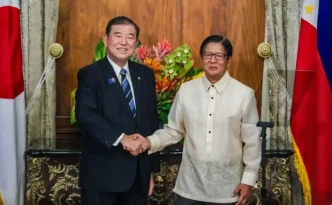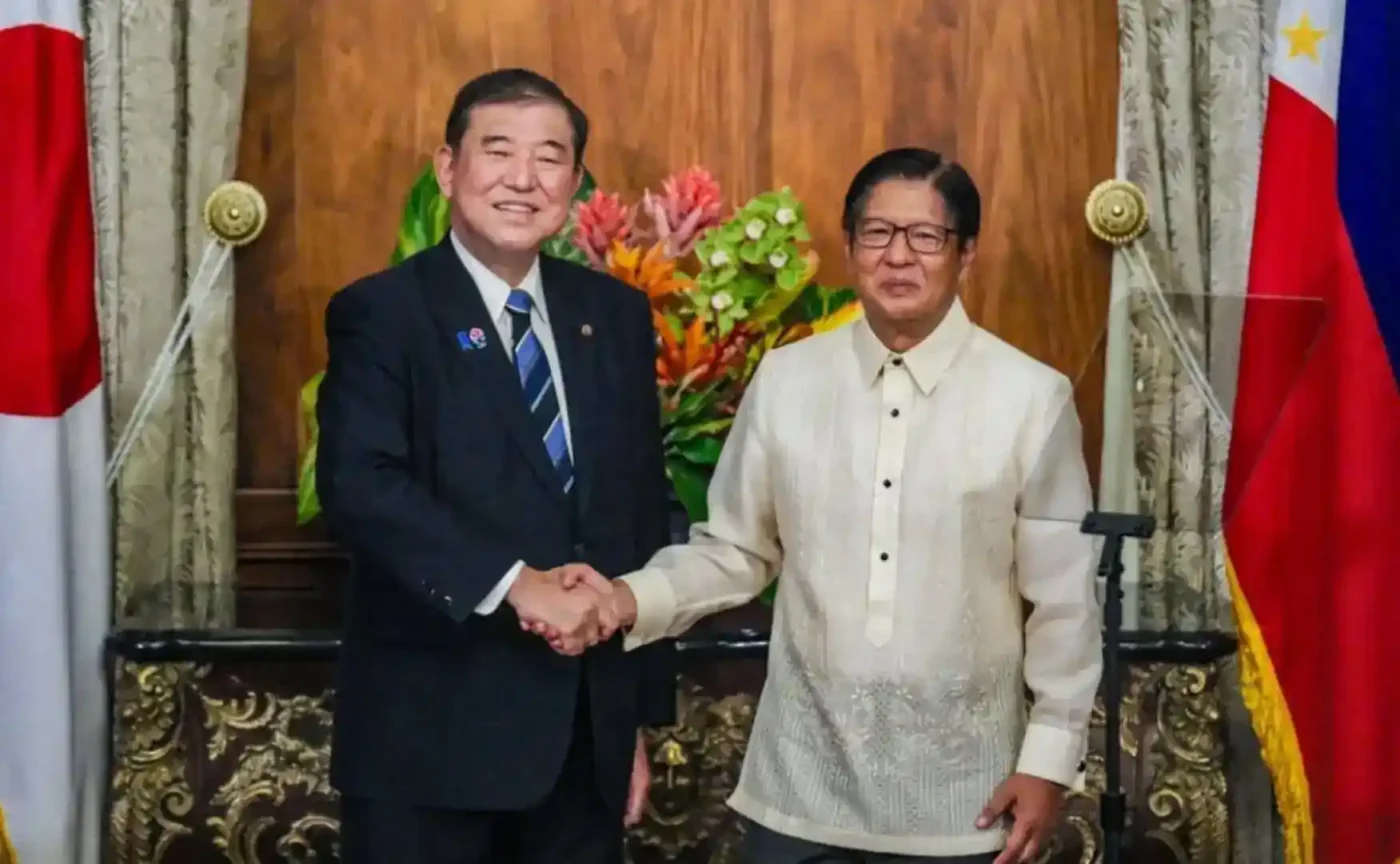In a significant step toward bolstering regional stability, the Philippines and Japan have reaffirmed their security alliance, pledging deeper cooperation to address shared concerns over maritime disputes and geopolitical challenges in the Asia-Pacific. The renewed commitment, announced during a high-level meeting in Manila earlier this week, comes at a time of heightened tensions in the South China Sea, where overlapping territorial claims have strained relations among neighboring states.
Strengthening Bilateral Ties
The latest agreement builds on decades of diplomatic and military collaboration between Manila and Tokyo, with both nations emphasizing the importance of a rules-based international order. Philippine Foreign Secretary Enrique Manalo and Japanese Foreign Minister Yoko Kamikawa underscored their mutual interest in ensuring freedom of navigation and overflight in contested waters. “Our partnership with Japan is a cornerstone of peace and stability in the region” said Manalo during a joint press conference, highlighting the strategic importance of the alliance.
For Japan, the alliance with the Philippines is part of a broader effort to counterbalance growing assertiveness in the region, particularly in areas of strategic maritime importance. Kamikawa reiterated Tokyo’s commitment to supporting Manila through capacity-building initiatives, including joint military exercises and the provision of defense equipment. “We stand with the Philippines in safeguarding shared values and security interests” she stated, signaling Japan’s intent to play a more active role in regional defense dynamics.
Geopolitical Context and South China Sea Tensions
The reaffirmation of ties arrives against the backdrop of escalating tensions in the South China Sea, where the Philippines has repeatedly clashed with other claimants over disputed reefs and fishing grounds. Manila has accused vessels from a neighboring state of engaging in aggressive actions, including blocking supply missions to Filipino outposts. While both Manalo and Kamikawa avoided naming specific countries during their public remarks, the subtext of their statements pointed to shared concerns over actions that challenge international maritime law.
Japan, though not a direct claimant in the South China Sea, views the region as critical to its own security and trade routes. Over 80% of Japan’s energy imports pass through these waters, making stability a national priority. Tokyo has increasingly aligned itself with Southeast Asian nations like the Philippines to advocate for adherence to international rulings, such as the 2016 arbitral tribunal decision that invalidated expansive claims in the region—a ruling that has yet to be fully enforced.
Analysts suggest that the renewed alliance also reflects a broader strategic alignment among nations wary of regional power shifts. “This partnership is as much about deterrence as it is about cooperation” said Dr. Maria Santos, a geopolitical expert based in Manila. “Both countries are signaling their readiness to work together, alongside other allies, to maintain a balance of power.”
Military and Economic Dimensions
A key component of the reaffirmed alliance is the expansion of joint military exercises, which have grown in scope and frequency over the past decade. The annual Balikatan exercises, traditionally conducted with the United States, have recently included Japanese forces as observers and participants, marking a shift toward trilateral and multilateral cooperation. Plans are underway for a new series of maritime drills in 2025, focusing on disaster response and anti-submarine warfare—areas of mutual concern given the region’s vulnerability to natural calamities and security threats.
Beyond military collaboration, the alliance extends to economic and development aid, with Japan remaining one of the Philippines’ largest sources of foreign direct investment and infrastructure funding. Tokyo has pledged continued support for projects under the Philippines’ Build Better More program, including a commitment of 250 billion yen (US$1.67 billion) over the next five years for transportation and urban development initiatives. “Economic stability is inseparable from security” said Kamikawa, linking Japan’s investment in the Philippines to broader regional goals.
For the Philippines, Japanese assistance is crucial in addressing domestic challenges, from modernizing its coast guard to rebuilding communities affected by frequent typhoons. The economic dimension of the alliance also serves as a counterweight to reliance on other major powers, offering Manila a diversified portfolio of international partnerships.
Regional Reactions and Implications
The strengthened alliance has not gone unnoticed by other regional players. While allies such as the United States and Australia have welcomed the development, some observers caution that it could exacerbate existing tensions. “There’s a risk of miscalculation if military cooperation is perceived as provocative” noted a Southeast Asian diplomat speaking on condition of anonymity. The diplomat suggested that Manila and Tokyo might face diplomatic pushback from parties opposed to their joint stance on maritime issues.
Public sentiment in the Philippines appears broadly supportive of closer ties with Japan, with many Filipinos viewing Tokyo as a reliable partner. Social media posts on platforms like X reflect a mix of optimism and pragmatism, with users praising Japan’s historical support while urging the government to ensure that the alliance benefits local communities. “Japan has always helped us, from disaster relief to jobs. Let’s make sure this deal isn’t just for politicians” wrote one user, capturing a common sentiment of cautious approval.
In Japan, the government faces domestic pressure to balance its foreign policy ambitions with budgetary constraints. While Prime Minister Fumio Kishida has championed a more assertive regional posture, some critics argue that resources spent on overseas alliances could be better directed toward domestic challenges like an aging population and economic stagnation. Nevertheless, the strategic imperative of securing maritime routes appears to outweigh such concerns for now.
Broader Alliances and the Role of the Quad
The Philippines-Japan alliance dovetails with broader regional frameworks, notably the Quadrilateral Security Dialogue (Quad), which includes Japan, the United States, Australia, and India. While the Philippines is not a formal member of the Quad, its security partnerships with Japan and the US position it as a key player in the grouping’s efforts to promote a free and open Indo-Pacific. Recent Quad summits have emphasized the importance of engaging Southeast Asian nations, with Manila often cited as a critical link in the regional security architecture.
For Japan, the alliance with the Philippines also serves as a bridge to ASEAN, the Association of Southeast Asian Nations, which remains a cornerstone of Tokyo’s diplomatic strategy. By strengthening bilateral ties with Manila, Japan hopes to foster greater cohesion within ASEAN on issues like maritime security and economic integration—areas where consensus has often been elusive due to differing national interests.
Some experts speculate that the Philippines could play a more prominent role in Quad initiatives if current trends continue, though Manila has historically been cautious about aligning too closely with any single bloc. “The Philippines is walking a tightrope, balancing its alliances with the need for strategic autonomy” observed Dr. Santos. If confirmed, such a shift could reshape regional dynamics, potentially drawing other ASEAN nations into closer cooperation with the Quad.
Looking Ahead
As the Philippines and Japan deepen their security alliance, the implications for the Asia-Pacific region are profound. Their partnership underscores a shared commitment to countering destabilizing forces, whether through military collaboration or economic support. Yet questions linger about how far this alliance can go in addressing the root causes of regional tensions, particularly in the absence of broader multilateral agreements on disputed territories.
For now, both nations appear determined to chart a path forward together, navigating the complex geopolitical landscape with a mix of pragmatism and resolve. As one Filipino official put it, “This alliance isn’t just about today’s challenges—it’s about building a future where our children can live in peace.” With the eyes of the region watching, the coming years will test whether this partnership can deliver on that promise.
















